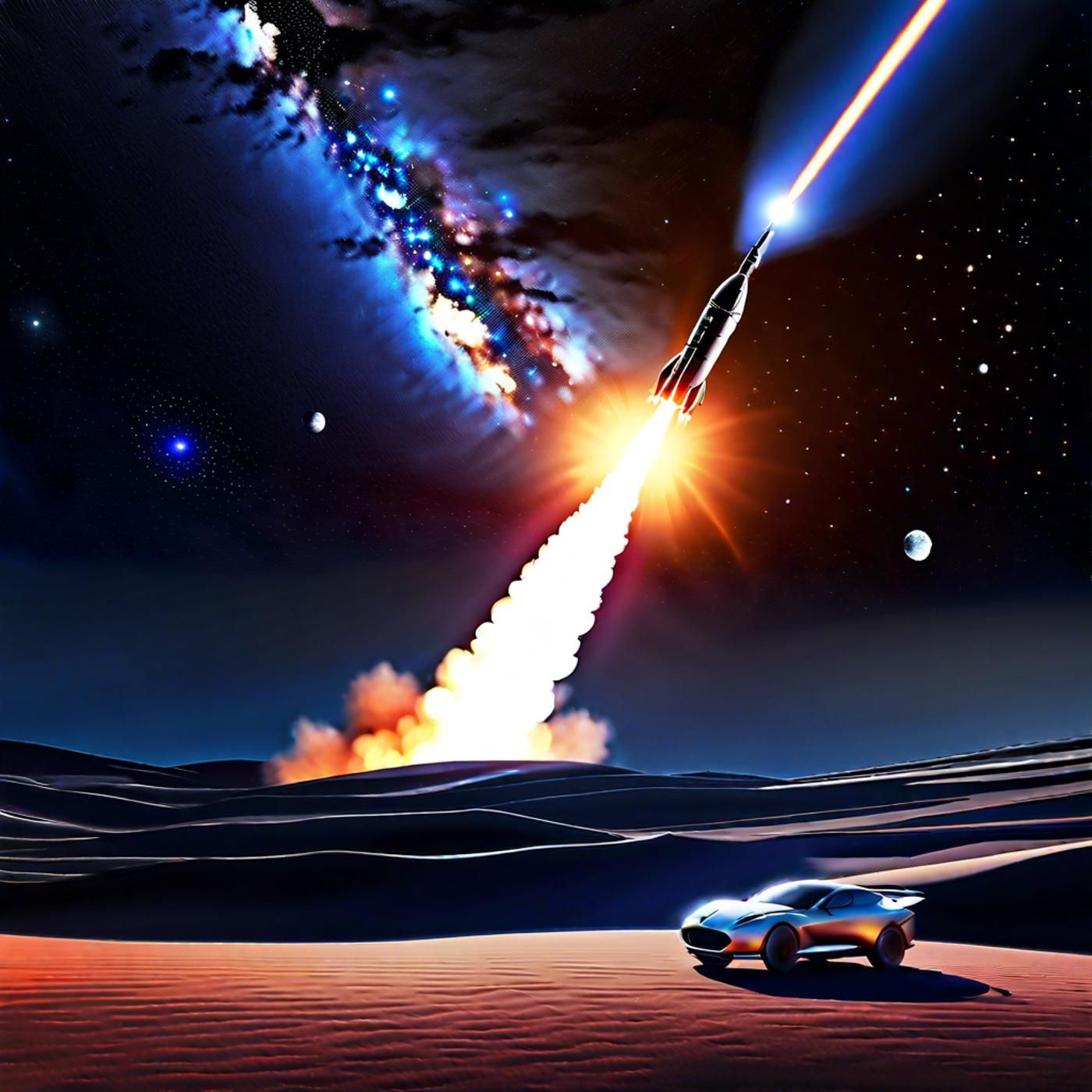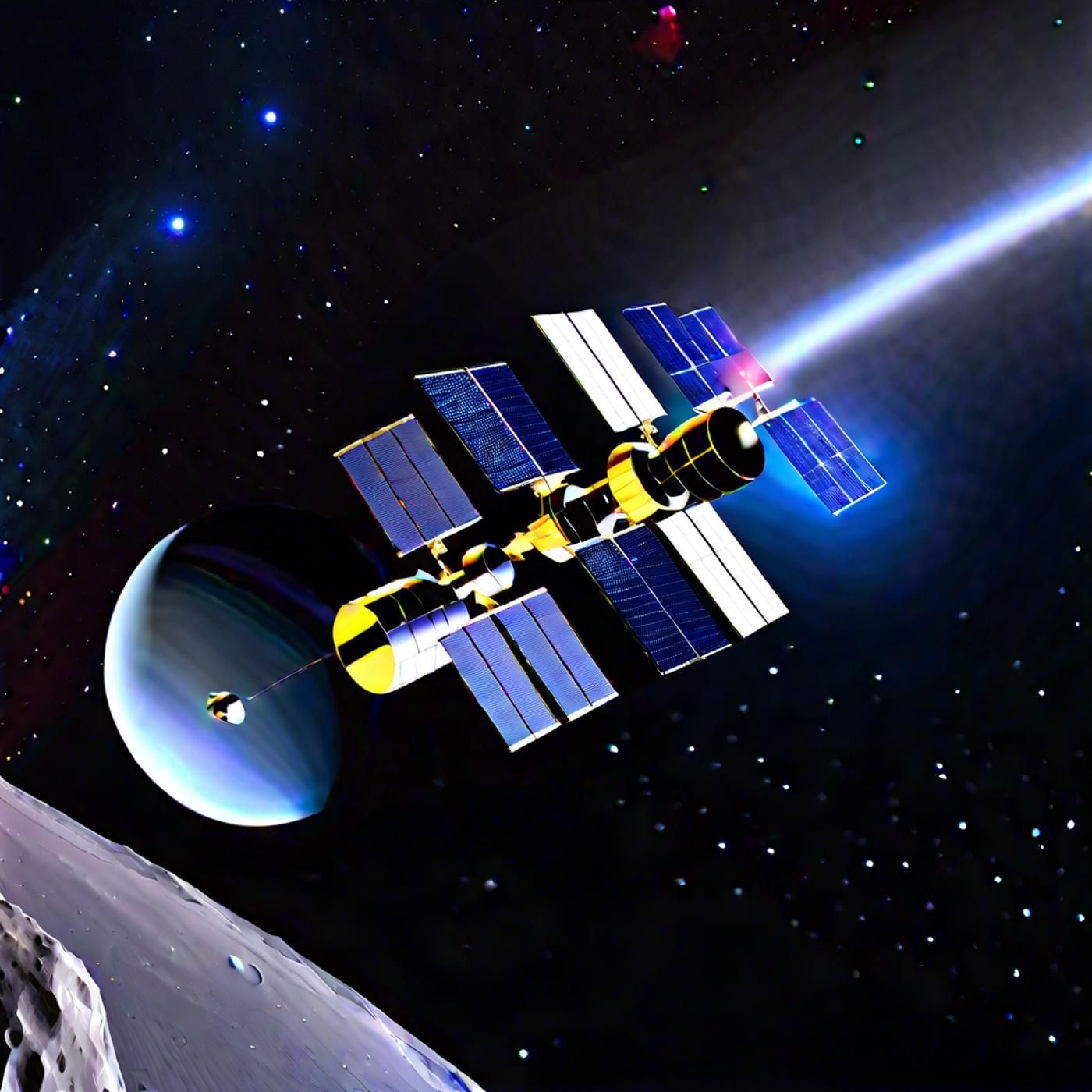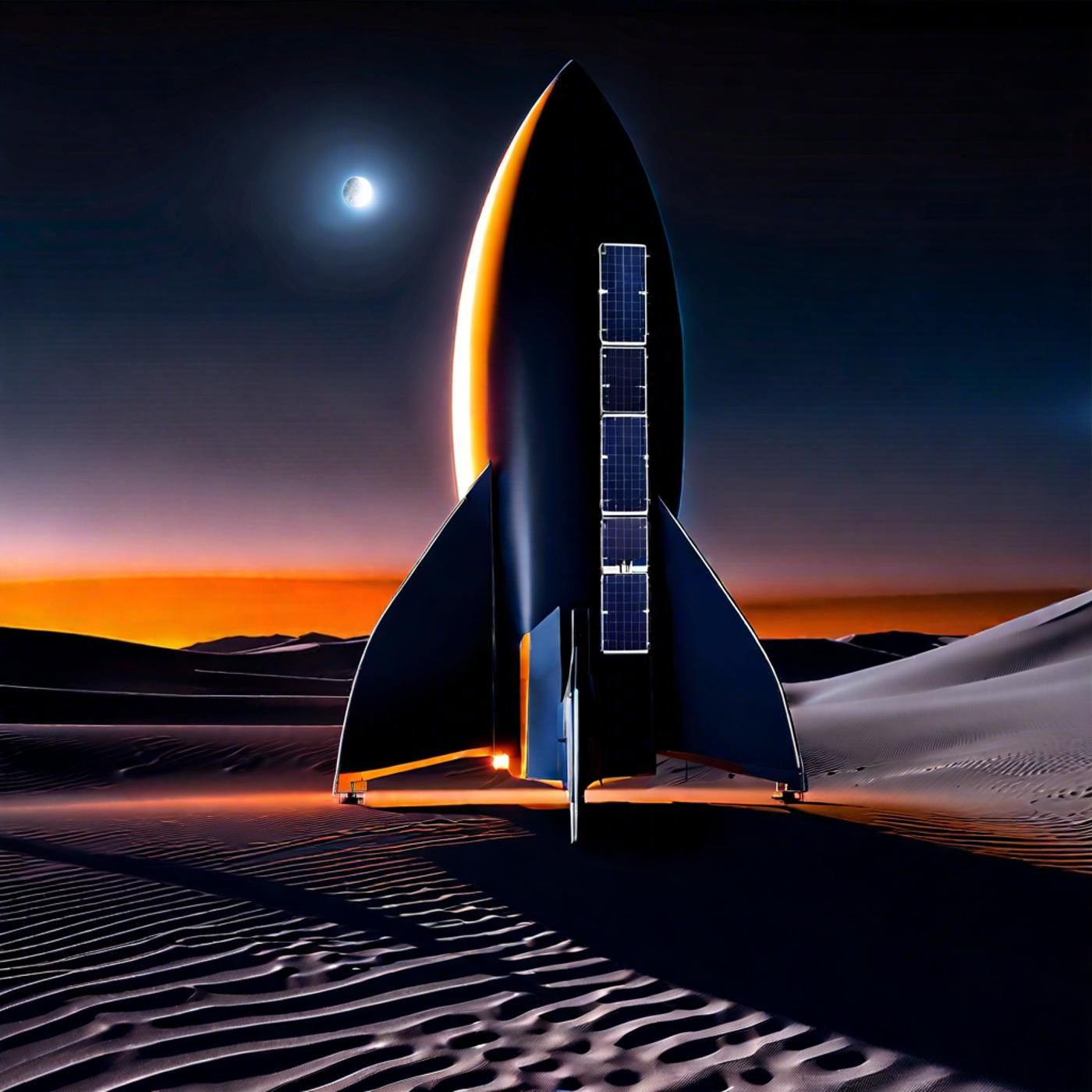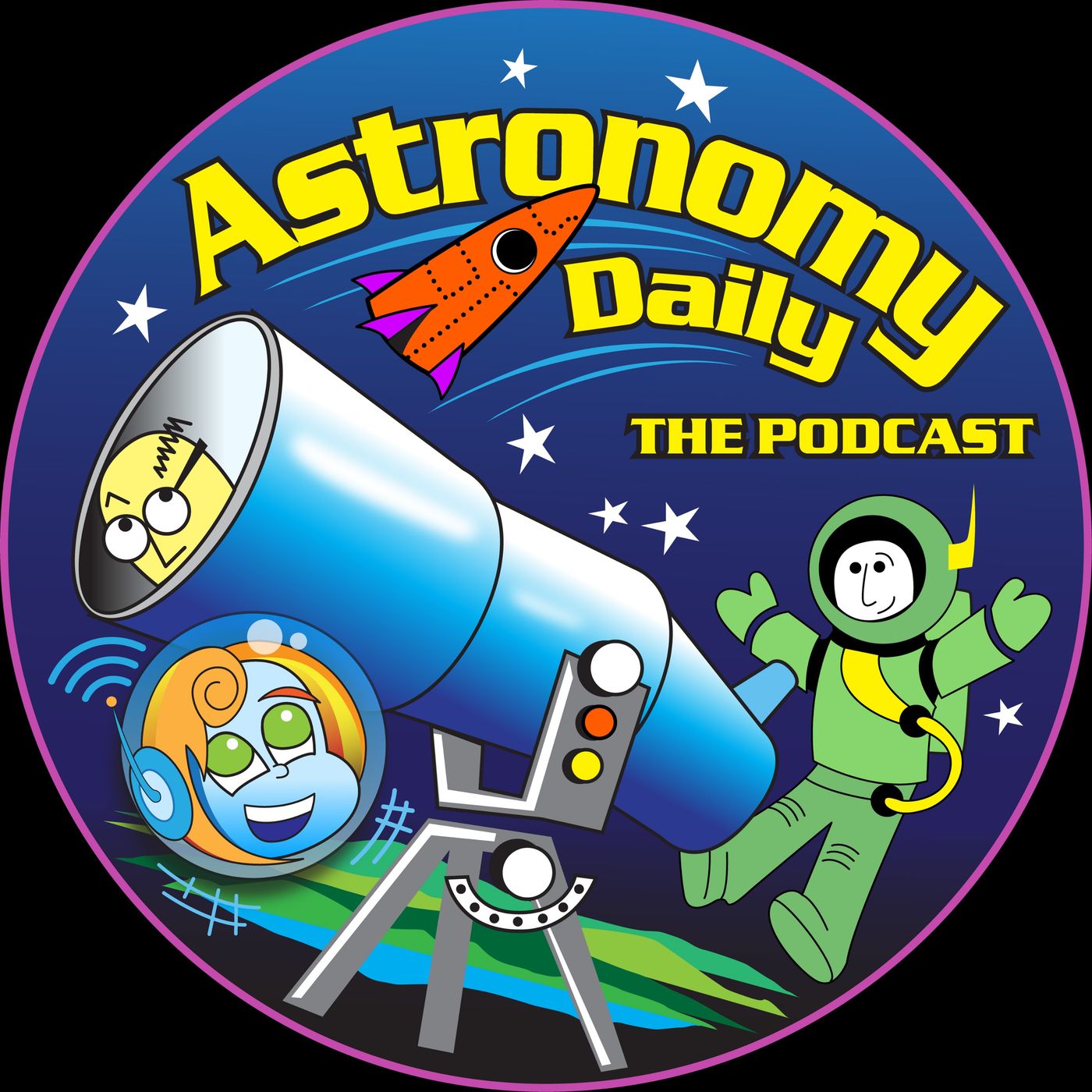S03E58: Starship's Fourth Flight & Artemis Accords: SpaceX's Next Leap and NASA's Global Vision

Embark on a celestial journey with today's episode of Astronomy Daily - The Podcast, where your host, Anna, guides you through the latest cosmic updates. We'll kick off with SpaceX's preparations for the fourth Starship flight test, aiming for a June...
Embark on a celestial journey with today's episode of Astronomy Daily - The Podcast, where your host, Anna, guides you through the latest cosmic updates. We'll kick off with SpaceX's preparations for the fourth Starship flight test, aiming for a June 5 lift-off. Next, we'll delve into NASA's participation in an Artemis Accords workshop promoting safe and sustainable space exploration. Then, we'll marvel at a spectacular meteor event over Spain and Portugal captured by advanced atmospheric monitoring technologies. We'll also update you on Boeing's Starliner crew capsule and its upcoming mission to the International Space Station. Finally, we'll explore new algorithms being developed to protect satellites in the increasingly crowded space around Earth.
(00:00) This episode of Astronomy Daily explores the latest advancements from SpaceX
(01:01) SpaceX is preparing for its fourth starship test flight scheduled for June 5
(03:45) NASA participated in an international workshop to advance the Artemis Accords
(05:43) ESA satellite captures stunning meteor over Spain and Portugal on May 18
(07:29) NASA and Boeing confirm that Starliner is safe despite minor helium leak
(08:57) Pakistani cubesat launched with China's Chang'e six mission sends back data
(10:42) University of Central Florida developing algorithms to protect satellites from potential collisions
For an astronomical experience, visit our website at astronomydaily.io for the latest news, sign up for our free newsletter, and check out exclusive sponsor deals. Connect with us on X (@AstroDailyPod) for engaging discussions with fellow space aficionados. This is Anna, reminding you to keep your gaze fixed on the heavens. Until our next stellar episode, let the cosmos ignite your curiosity and wonder. Clear skies and cosmic discoveries to all!
Become a supporter of this podcast: https://www.spreaker.com/podcast/astronomy-daily-the-podcast--5648921/support.
www.astronomydaily.io
www.bitesz.com
Sponsors
www.bitesz.com/nordpass
https://www.bitesz.com/show/astronomy-daily-the-podcast/sponsors/
AI Transcript
This episode of Astronomy Daily explores the latest advancements from SpaceX
Anna: Welcome to Astronomy Daily. This is your host, Anna, bringing you the latest updates in space exploration, astronomical phenomena, and science discoveries. In this episode, we'll delve into a range of intriguing topics. We'll start by exploring the latest advancements from SpaceX, including preparations for the fourth Starship flight test. Then we'll discuss NASA's participation in an important Artemis Accords workshop aimed at promoting safe and sustainable space exploration. We'll also cover a spectacular meteor event over Spain and Portugal captured by advanced atmospheric monitoring technologies. Additionally, we'll share updates on Boeing's Starliner crew capsule and its upcoming mission to the International Space Station. Finally, we'll touch on new algorithms being developed to protect satellites in the increasingly crowded space around Earth. Stay tuned for these stories and more on this episode of Astronomy daily. Daily podcast.
SpaceX is preparing for its fourth starship test flight scheduled for June 5
SpaceX is setting the stage for its fourth starship flight test from Starbase, Texas, scheduled for June 5. This exciting milestone comes just under three months after the third flight on March 14, and SpaceX has shared insights into what they've learned and what they aim to achieve this time around. The primary mission for flight four focuses on demonstrating the ability to return and reuse both the starship and its super heavy booster. Notably, they'll be executing a landing burn and aiming for a soft splash down in the Gulf of Mexico with the super heavy booster while attempting a controlled reentry for the starship. SpaceX has retained the basic mission outline from previous flights, but has made significant adjustments based on lessons learned from flight three. For instance, one of the major issues they encountered during the last test was a blocked filter in the liquid oxygen supply, leading to a loss of inlet pressure and premature engine shutdowns. To address this, SpaceX has incorporated better filtration capabilities and more robust hardware to ensure smoother propellant transfers and more reliable raptor engine startups. Additionally, they've installed new roll control thrusters on the starship to improve its attitude control during reentry, which was a significant problem in the previous mission. The company has also made changes to the fueling process, opting to load liquid methane first, followed by liquid oxygen. Unlike the sequence used in flight three, these tweaks, along with modifications to the ground support systems, should allow for a more streamlined prelaunch sequence and hopefully mitigate some of the issues faced earlier. However, all these preparations hinge on regulatory approval from the Federal Aviation Administration. SpaceX has submitted a request for a public safety determination and is working closely with FAA officials to secure the necessary clearance. The approval process is critical as the ongoing investigation into the flight three mishap continues. SpaceX remains hopeful that, pending FAA's findings, they can move forward with the launch even before the investigation is fully closed out. Success in this fourth test flight is crucial not just for SpaceX, but also for NASA's Artemis program, which aims to use the starship for crewed lunar landings by 2026. Bill Nelson, NASA administrator, underscored the importance of this mission, noting that the development and milestones achieved by SpaceX are pivotal for the future of lunar exploration. As we await this potentially groundbreaking flight, the space community's eyes are on SpaceX, eagerly anticipating how these adjustments will play out and bring us closer to sustainable space travel.
NASA participated in an international workshop to advance the Artemis Accords
NASA recently participated in an international workshop to advance the Artemis Accords, a landmark agreement aimed at fostering safe, peaceful, and responsible exploration of the moon, Mars, and beyond. Held in Montreal and hosted by the Canadian Space Agency, this workshop brought together space officials from 24 countries united in their commitment to cooperative space activities. Since the inception of the Artemis accords nearly four years ago, 39 countries have joined the United States in this voluntary commitment to transparency and responsible behavior in space. The accords build upon over two decades of continuous human presence aboard the International Space Station and aim to push humanity's reach safely and sustainably farther into space than ever before. NASA deputy Administrator Pam Melroy and CSA president Lisa Campbell kicked off the event, emphasizing the shared vision of a global community engaging in space exploration. Discussions focused on key tenets such as non interference, interoperability, and scientific data sharing. These principles are crucial for ensuring that signatories lunar missions do not inadvertently interfere with one another, supporting safer operations on the lunar surface. Participants also conducted a AH tabletop exercise to further define and implement these principles. Reflecting their commitment to transparency and mutual support, the Artemis accords are seen as essential to the success of NASA's Artemis campaign and other exploratory activities by signatories striving for a future in space that benefits all of humanity. As the workshop concluded, representatives reaffirmed their dedication to the Artemis principles and planned future meetings to continue their collaborative efforts. This workshop is a testament to the new age of international cooperation in space exploration, signifying a collective step towards unlocking the mysteries of the cosmos.
ESA satellite captures stunning meteor over Spain and Portugal on May 18
On the night of May 18, the skies over Spain and Portugal were illuminated by a stunning meteor, an event captured both by a ground based camera operated by ESA's planetary Defense office and the Lightning imager aboard the meteosat third generation satellite. This breathtaking spectacle not only left onlookers in awe, but also showcased the advanced capabilities of our atmospheric monitoring technology. The lightning imager, although primarily designed to detect lightning phenomena, demonstrated its versatility by capturing the meteors passage through its high resolution cameras, enabling continuous observation of such events from a geostationary orbit. The ability to monitor atmospheric events like this meteor from space is a leap forward in our technological prowess. Traditionally, detecting meteors relied heavily on ground based observations, which are limited by weather conditions and geographic coverage. With the meteosat's lightning imager, we can now extend our monitoring capabilities to a much broader and uninterrupted range, collecting valuable data that can enhance our understanding of atmospheric phenomena. Additionally, the success of capturing this meteor highlights the potential for improving weather forecasting and storm prediction, especially in areas with limited ground based detection capabilities. By integrating data from both the lightning imager and ground based systems, we can develop more comprehensive and accurate models for atmospheric events, ultimately contributing to better preparedness and response strategies for natural phenomena. This remarkable event not only underscores the capabilities of our current technology, but also paves the way for future advancements in atmospheric science and meteor observation, ensuring that dazzling spectacles like these are documented from every possible angle.
NASA and Boeing confirm that Starliner is safe despite minor helium leak
After nearly three weeks of rigorous tests and detailed analysis, NASA and Boeing have confirmed that the Starliner crew capsule is safe to fly despite a minor helium leak in its propulsion system. Initially set to launch earlier, the Starliner's mission faced a nearly one month delay to allow for a thorough examination of a small helium leak detected in one of the four propulsion modules. Steve Stitch, manager of NASA's commercial crew program, assured that even if the leak increased 100 fold, it would not compromise the mission's safety. Detailed simulations and assessments showed that the spacecraft could handle multiple leaks without jeopardizing safety. The rigorous evaluation led to the conclusion that the spacecraft was ready to proceed without any invasive repairs. The two astronauts, Commander Barry Butch Wilmore and co pilot Sunita Williams, are scheduled to fly back to the Kennedy Space center to prepare for the launch. Planned for June 1. The Starliner will be launched atop an Atlas V rocket and is expected to dock at the International Space Station the following day, with a return to Earth slated for June 10. In essence, while the small helium leak in the Starliner's propulsion system posed initial concerns, comprehensive testing showed it does not pose a significant risk. This conclusion ensures that the long awaited mission can now proceed, promising to advance our human spaceflight capabilities once again.
Pakistani cubesat launched with China's Chang'e six mission sends back data
The astronomy Daily podcast a pakistani cubesat launched with China's Chang'e six mission has sent back its first images and data from lunar orbit, marking a significant achievement in Pakistan's space exploration efforts. Launched on May 3, the satellite began to transmit data. Just five days later, on May 8, this small, 15.4 pound satellite, named Icube Q, successfully captured images of both the moon and the sun, showcasing its impressive capabilities from lunar orbit. This collaboration between China and Pakistan symbolizes the growing cooperation in space technology and exploration between the two nations. Developed jointly by Pakistan's Institute of Space Technology and China's Shanghai Jiaotong University, the cubesat is part of China's broader Chiang Six mission M, which aims to collect samples from Apollo crater on the moon's far side and return them to earth for analysis. The mission also serves as a stepping stone for Pakistan's future space endeavors. During a data handover ceremony in Beijing, pakistani officials expressed their commitment to further space collaborations, highlighting upcoming launches and their participation in China's international lunar research station, ILRS. Such international cooperation is pivotal as it enhances technological capabilities and scientific understanding, benefiting not just the involved countries but the global space community. The ICube Q's successful deployment and data transmission underscore the potential for future collaborative missions, significantly advancing our, exploration of the moon and beyond.
University of Central Florida developing algorithms to protect satellites from potential collisions
As we push the boundaries of space exploration, one pressing concern is the increasing congestion in Earth's orbit. Researchers at the University of Central Florida are tackling this issue head on by developing advanced algorithms designed to protect satellites from collisions in the vast expanse between Earth and the moon. Known as cislunar space. This region, influenced by the gravitational pull of both celestial bodies, presents unique challenges for monitoring and predicting the paths of satellites, spent rocket stages, and space debris. The new algorithms aim to automatically track objects and predict potential collisions, offering a real time solution to an increasingly congested space environment. The algorithms are being funded primarily by the Air Force Office of Scientific Research and are designed to provide fast and accurate quantification of uncertainties, enhancing our ability to forecast maneuvers and ensure space domain awareness. The technology isn't just about averting immediate threats it shares similarities with maritime domain awareness in terms of tracking and predicting the movements of vessels. This crossover showcases the versatility of the algorithms, which could also be used to monitor large maritime domains for suspicious behaviors in real time. The urgency of this innovation cannot be understated. With over 12,500 satellites currently orbiting Earth and many more on the horizon, the risk of collision is significant. These algorithms represent a crucial step forward in maintaining the safety and sustainability of our activities in space, ensuring that the satellites we rely on for everything from weather forecasting to global communications can operate without the constant threat of collision. Such advancements are vital for the continued exploration and utilization of space, protecting our assets, and paving the way for future missions. Thank you for tuning into astronomy daily with your host, Anna. We hope you found today's updates on space exploration and astronomical phenomena informative and engaging. Don't forget to visit our website at astronomydaily IO for more episodes, back issues of our podcast, and to sign up for our free daily Space and astronomy newsletter. Check out the latest in space and astronomy news with our constantly updating feed. We also invite you to support our sponsors, whose products we use and recommend Nordpass, NordVPN, Protonmail, and Amazon, which all have exceptional deals for you. Links are on our website. Follow us on X, formerly known as Twitter, by searching for at astroDailypod to stay updated with the latest happenings in the world of astronomy. If you've enjoyed this episode, please share it with a friend. Until next time, keep smiling and looking up.
New to Astronomy Daily - The Podcast?
Here are some great episodes to start with.




















